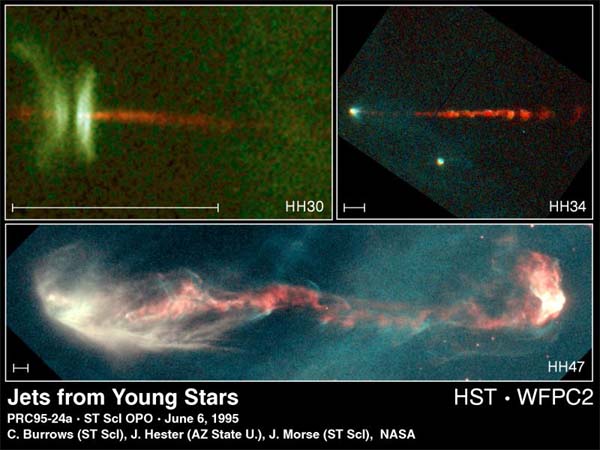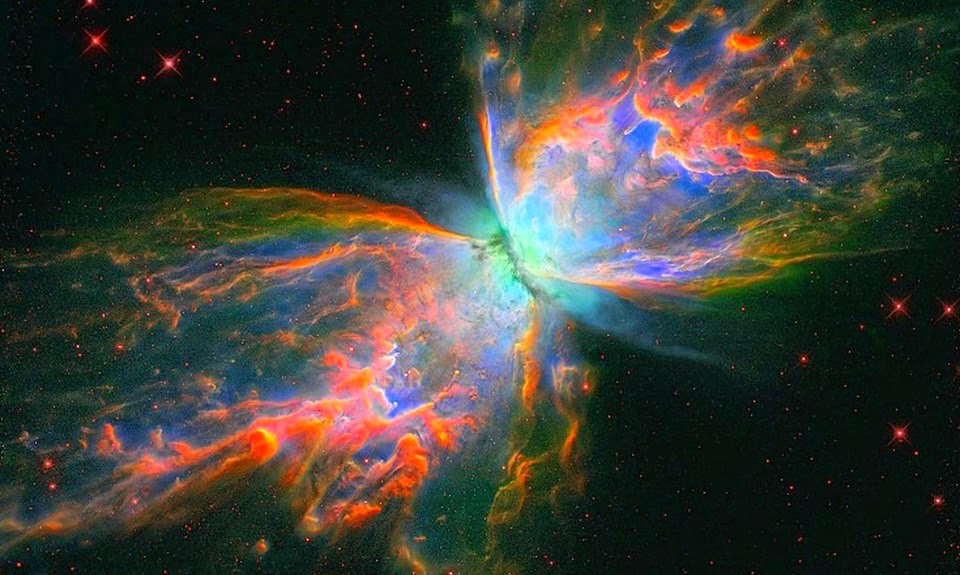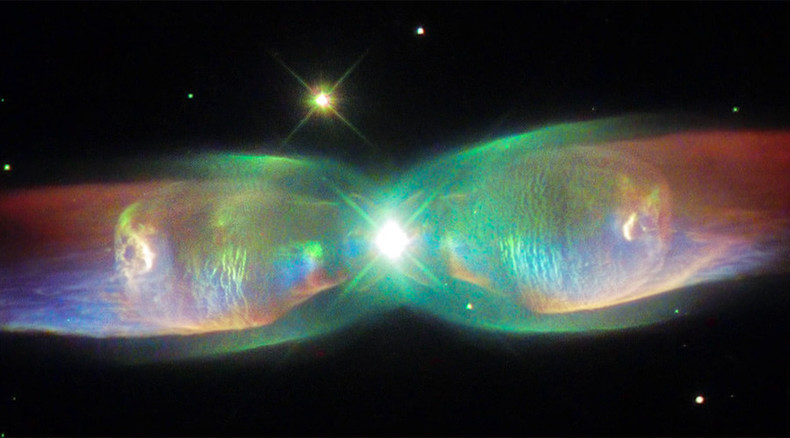"Electric universe" theory is at odds with everything modern science has determined about the universe. Yet something about it sparks fervor in the hearts of believers.
Image: Che Saitta-Zelterman
They call themselves The Thunderbolts Project.
They subscribe to an idea called "electric universe," and sometimes describe themselves as "getting EU eyes." Like slipping on rose-colored glasses, the conversion changes their perception of the entire universe. The objects and events remain the same. But they're tinged with truth. And in EU theory, the truth is that electricity rules.
Electric currents that flow along plasma filaments shape and power galaxies. The currents stream into stars, powering them like fluorescent bulbs. They induce the births of planets. Craters on those planets come from electrical arcs, like lightning bolts, that sear the surfaces.
Also, black holes don't exist, and neither does dark matter. Nor dark energy.
The Big Bang? Never happened.
Einstein's two relativities are laughable fiction.
Electricity can explain away all that stuff.
"The story of the cosmos that you see in the media now is virtual reality," said Wallace Thornhill, one of the founders of EU.
⚡⚡⚡
The electric universe concept does not meet the National Academy of Sciences' definition of a "theory," which is "a comprehensive explanation of some aspect of nature that is supported by a vast body of evidence" and "can be used to make predictions about natural events or phenomena that have not yet been observed."
In physics, theories need math. That's how you predict, gather evidence, verify, disprove, and support. But EU theory isn't big on math. In fact, "Mathematics is not physics," Thornhill said. While that equation aversion makes the theory pretty much a nonstarter for "mainstream" astronomers, it is the exact thing that appeals to many adherents.
"They don't blind you with science," said Rasjid Smith, who learned EU theory from YouTube. "It is understandable to a capable schoolchild."
The idea that outsiders ("the people") will revolutionize physics, in a way that those outsiders understand, is powerful.
"What doesn't seem to vary is the dissident psychology behind the involvement."
"Science is returned to the people—the garage tinkerer, the practical engineer, and the natural philosopher," Thornhill told Motherboard.
"People say to me that it has changed their lives because it makes sense for them," he said. "And because it is a real cosmology, there is something for everyone, be they scholar, artist, engineer, or the 'man on the street.'"
EU is completely at odds, however, with everything modern science has determined about the universe.
"At best, the 'electric universe' is a solution in search of a problem; it seeks to explain things we already understand very well through gravity, plasma and nuclear physics, and the like," said astronomer Phil Plait, who runs the blog Bad Astronomy at Slate. "At worst it's sheer crackpottery like homeopathy and astrology, making claims clearly contradicted by the evidence."
Yet something about it sparks fervor in the hearts of people-on-the-street, more fervor than casual believers in the Big Bang have. Despite the gaps, logical fallacies, and evidence to its contrary, EU appeals deeply to adherents, lighting a fire not unlike a tent revival does. The question is, what is it about EU that grabs people? 
Thornhill began his obsessive study of cosmic electricity in high school, when he read Immanuel Velikovsky's book Worlds in Collision, published in 1950.
Velikovsky was an author known mostly for his controversial "comparative mythology" books, which recast and reinterpreted ancient history. In Worlds in Collision, he said that Jupiter ejected to Venus around 1500 BCE. From there, the newborn planet flew close to Earth, causing all sorts of catastrophes. When Venus came back around a half-century later, it stopped Earth's spin (briefly), making for a long night.
The resulting disasters, Velikovsky claimed, showed up in mythology around the world. Astrophysicists pointed out that this Jupiter-born Venus idea violated theories about orbits and gravity. But Velikovsky had gone rogue: He suggested gravity didn't cause orbits. Electricity did.
When a young Thornhill read Velikovsky's book, he recognized a kindred spirit. Here, he thought, was a true scientist, not afraid to be a heretic. After studying physics and electronics at the University of Melbourne, Australia, Thornhill briefly did upper-atmosphere research at IBM, but he, too, identified as a heretic. It wasn't long before he left the establishment.
He never forgot about Velikovsky, though. And in the early 1970s, he heard about a magazine called Pulsate: 10 issues, all devoted to his scientific hero. The publication was written by brothers Steven and David Talbott. He soon met these two, along with Velikovsky himself, at a conference called "Velikovsky and the Recent History of the Solar System." Five years later, he found himself in Velikovsky's home in Princeton, New Jersey. There, Velikovsky "planted the seed of an idea that gravity is related to the electrical structure of neutral matter," Thornhill told me.

Talbott. Image: Che Saitta-Zelterman
That seed would eventually grow into a framework called "electric universe" theory, which Thornhill and David Talbott would later develop together and which would gain a fervent worldwide following.
Thornhill and Talbott began their official EU collaboration at another conference, years later. "Since my university days, I had been prepared to assist those leading the fray in any way I could," Thornhill said. "But at that 1994 conference, I realized that the leaders were gone and it was up to me."
In preparation for that meeting, which was called "Planetary Violence in Human History," Thornhill spent a month sleeping on his friend's office floor. He wanted to convince Talbott that the ancient images he'd been studying—petroglyphs that look like the cartoon Suns in the top-right corners of kindergarten art—bore witness to catastrophic plasma events. Plasma, the idea went, pervades the universe in filaments. Those filaments carry electric current, and that current controls the cosmos. "Magnetism, gravity and the nuclear forces are all different manifestations of the electric force at vastly different scales," Thornhill said of the basis of the theory.
Thornhill called his conference talk, "The Electric Universe."
⚡⚡⚡
Today, it's not just Thornhill and Talbott. EU also has the backing of a fervent community, those in The Thunderbolts Project. Since Thornhill and Talbott founded this movement, the internet has spread it.
The Thunderbolts website has 1,800 forum participants, with about 130 online simultaneously at peak traffic. The Thunderbolts Facebook page has around 10,000 followers.
One hundred seventy-five people donate $1,905 per month to the Thunderbolts Project Patreon campaign for video production. On its YouTube page, six feature-length documentaries have anywhere between 300,000 and a million views. The group holds annual conferences. This year's is at the Sheraton in Mesa, Arizona.
Reddit user NeeAnderTall, an EU follower and Thunderbolt subreddit peruser, began life wanting to be an astronaut. NeeAnderTall, who didn't want to use his real name, consumed science fiction like fuel. But as the years supposedly depicted in Space 1999 and 2001: A Space Odyssey approached without measuring up, he grew frustrated.
"Everything I wanted to experience was always 20 years away," he said.
So he decided to reverse-engineer a UFO (something he no longer believes in). In the classifieds at the back of Popular Science magazine, he found an ad for High-Energy Electrostatics Research, a tome that deals with "anti-gravity." Soon, he enrolled in college astronomy and geology classes. He gave status-quo answers to get good grades, but he didn't buy into all of it, especially dark matter.
While browsing Reddit one day, he came across Thornhill and Talbott's video Thunderbolts of the Gods, an EU primer. He watched YouTube video after YouTube video, hooked. He likens EU to "a hipster teenager [rebelling] against parental restrictions and taboos."
That reaction against convention also led Marc Royal, a 47-year-old music producer in Alberta, Canada, to the electric universe. In his early twenties, he felt constrained by the corporate demands of his intended career in graphic design. His true passions were making music and reading physics books from Foyles Bookstore in London. When he considered going back to school to formally learn more about the universe, he met with a professor to investigate his options.
"I want you to put all the books down because I want to teach you from scratch," the professor said, of his auto-didacticism.
"I thought, 'Oh, that's indoctrination,'" said Royal. Which he was not into.
He opted to continue his solo studies. Soon, he concluded that gravity holds physics back from a grand theory that could explain everything. He evolved the germ of his own unified theory: that "most things could already be explained by electricity alone." He didn't find the Thunderbolts, or the official electric universe, until later.
Royal still lurks on the Thunderbolts forum, but the negativity now keeps him silent. A typical comments section is full of ad hominem attacks and invective toward mainstream astronomy and EU doubters. He doesn't think the Thunderbolts have it all figured out.
"They need to work the maths out and get their papers peer-tested," he said.
But most in the astronomy "establishment" or "NASA," which seems to be the blanket EU term for a conglomeration of mainstream astronomers, would say EU doesn't deserve refutation.
"We know stars generate energy through nuclear fusion, not plasma discharge; we know craters are formed from asteroid and comet impacts, not huge electric arcs; we absolutely know that special and general relativity work, despite some EU proponents' claims," said Plait, who has tangled with EU commenters a time or two. "From what I've seen, most EU claims are on the cranky end of [the] scale. That's why most astronomers ignore it: No evidence for it, tons of evidence against it, and no support mathematically or physically."
EU makes few predictions. It doesn't have a unified framework, or mathematical laws underpinning it. The underlying physics doesn't go far beyond, "It's electric." Data doesn't support or disprove specific hypotheses. And where are all these electrical arcs in space? And what could their power source possibly be?
It's hard to point out the holes in EU hole by hole because, well, there are a lot. (Here are some others' attempts to poke holes.) Proponents also cherry-pick individual phenomena to explain: individual entries on how stars shine, how craters form, why galaxies have their shapes, and what causes planets and craters. They don't give a whole-universe overview detailed enough to unify those phenomena and also apply to phenomena they haven't yet described.
Thunderbolts hate the question-mark terms that modern astronomers use—"dark energy," "dark matter"—to describe observations they can't explain yet. They call these concepts "patches."
The gaps in electric universe theory do drive followers from the fold. David, a former enthusiast who now calls EU an "anti-science cult" and wished to use only his first name, was undone when someone asked about Thornhill's latest electric explanation of gravity.
"When I looked into it, I was literally flabbergasted at how stupid it was," he said. "I really was ashamed that I had ever listened to a word Thornhill said."
Now he tries to de-convert others in the Thunderbolts forum, a process that he calls his "work."
"Why, just now I finally made someone see the light," he said, and sends me a link to two recent posts (the before and the after). "Deprogramming someone is kind of like the thrill of catching a large fish," he said.
⚡⚡⚡
Astrophysics has left many behind. Its concepts, almost by definition, are abstract. None of us, no matter what happened in Interstellar, will feel the tug of a black hole. We'll never be in the cosmic delivery room when a planet comes barreling around its orbit for the first time. Aside from solar-system samples, all we get from space are pictures and plots—evidence that immaterial photons hit some telescope's detector. The math that predicts and explains the cosmos is far outside common knowledge.
EU proponents hate the question-mark terms that modern astronomers use to describe observations they can't explain yet. What astronomers call dark matter and dark energy, doubters call "patches." Their nebulosity bothers Thunderbolts.
"The language of modern physics is largely meaningless: space-time, spooky action-at-a-distance, non-locality, dark energy, dark matter, black hole," Thornhill said.
Without evidence or explanations they can make sense of, EU followers feel like scientists are saying, "Just trust us." The classic dissident's response to that is, "I don't." And Susan Schirott, the CEO/President of T-Bolts Group, Inc., and also the group's Conference Director, Communication Director, and Volunteer Coordinator (all volunteer positions), says that while different members of the community are different, "what doesn't seem to vary is the dissident psychology behind the involvement." Among them, there's a general distrust of authority and a particular type of disappointment in scientists, the kind you felt when you realized your dad was just a dude.
"As a kid you grow up thinking scientists are these great minds, extremely intelligent, and very respectable people who do not get befuddled by their own biases, always ready and willing to accept that they might be wrong, and would be happily corrected in the pursuit of truth," said a Thunderbolt who wished to remain anonymous. "Then you grow up and realize that, just like everyone else, hardly anyone lives up to that standard."
So, the dissident says, why should we trust their traditional story of the cosmos?

Image: Che Saitta-Zelterman
"I believe history has showed us again and again that many novel ideas which were initially met with skepticism or angry rejection eventually gain more adherents and momentum until they end up as part of the orthodox corpus of scientific knowledge," said Miguel, who encountered EU in his work as a contributor to the website The Daily Grail, which explores "the fringes of science and history."
And, to some extent, he's right. The idea that Earth goes around the Sun, and not the other way around, was once considered heretical. Before revolutionary ideas become revolutionary, they simply sound fringe.
But the problem is that most fringe ideas don't turn out to be revolutionary. They just turn out to be wrong. And equating pseudoscience, or even just bad science, with solid science isn't just unorthodox. It can be dangerous.
Climate change denial slows the cleanup of the planet. Anti-vaccination movements give kids measles. GMO hysteria makes it harder for starving kids to get nutrient-rich rice. The Electric Universe theory doesn't seem to be hurting anyone at the moment, but wouldn't it be better for the Thunderbolts to expend their energy understanding good science? Or at least be as suspicious of EU as they are of "the astronomy establishment."
Every person I interviewed for this story was thoughtful, curious, and skeptical. They spend their free time learning. They don't want to accept; they want to investigate. I get that. I happen to love dark energy, and also data. But when a scientist says, "Just trust me," it's the job of any other scientist (or science writer) to say, "I don't," and to go digging for more, like the Thunderbolts do.
People want to figure the universe out themselves. Observatories receive regular letters from writers who say they have disproven Einstein's theories, debunked the Big Bang, or dined with extraterrestrials. The book No One May Ever Have This Knowledge Again is a collection of such letters written to Mount Wilson Observatory in Pasadena, California, during the early 20th century. It takes its title from one Alice May Williams of Auckland, New Zealand, who wrote, "I believe I have some knowledge which you gentlemen should have. If I die my knowledge may die with me & no one may ever have the same knowledge again."
It's my universe, too, Williams, the other letter-writers, and the Thunderbolts group seem to say. And I also want to make sense of it.
When Thornhill speaks to their souls in a YouTube video that claims to explain what NASA hasn't, using only the force that runs their toaster, they gravitate toward it. They log on to Thunderbolts.info and watch the full hour of Thunderbolts of the Gods.
In this film, Thornhill proclaims, "Modern cosmology gives us a rather disconnected view of the universe. Therefore, we look upon ourselves as isolated and disconnected. The electric universe takes a different view." In that view—the view through EU eyes—Earth is still just some pale blue dot. But arcs of plasma link that blue dot to the wider cosmos, hooking our place in the universe up to other places. All those places we'll never go.
The arcs also connect Thunderbolt members to each other. Like many misguided converts, they want to touch others so that the current can flow from them and into others. The problem, though, is that no one is grounding them.




